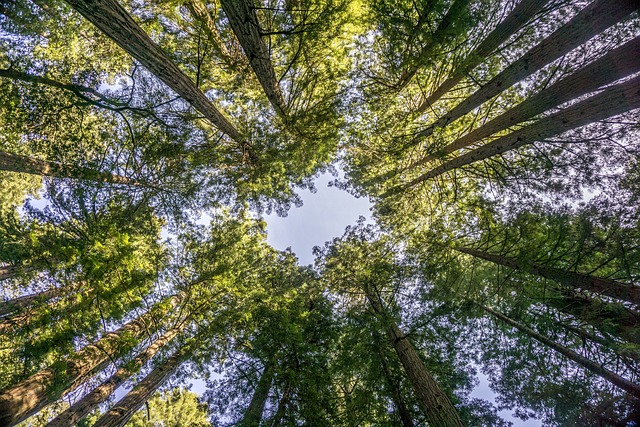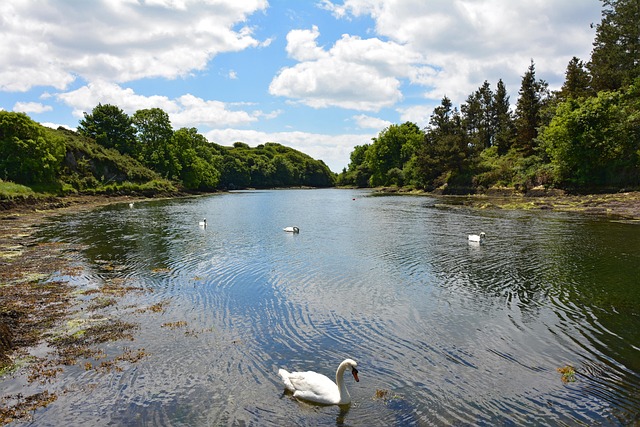Scenic terrain is a sought-after asset in outdoor recreation, appealing to diverse activities like hiking, camping, and photography. In real estate terms, it transforms simple recreation into memorable adventures and fosters environmental appreciation. Integrating outdoor recreation into development creates sustainable communities with hiking trails, green spaces, and scenic viewpoints. Well-developed infrastructure, including accessible trails and visitor centers, enhances the experience, boosts local economies, and promotes conservation. Modern amenities like lookouts and interpretive signage further enrich the visitor experience, encouraging exploration and fostering environmental stewardship.
In today’s quest for outdoor recreation, scenic terrain offers a captivating allure that draws folks from all walks of life. From majestic mountains to tranquil waterscapes, these natural landscapes provide an idyllic backdrop for various activities. This article explores the integration of outdoor recreation into real estate development, delving into strategies to enhance experiences through infrastructure and services tailored for scenic terrain. Discover how thoughtfully designed environments can unlock the full potential of our natural resources, fostering sustainable leisure and entertainment.
The Allure of Scenic Terrain for Outdoor Recreation

The allure of scenic terrain for outdoor recreation is undeniable, drawing enthusiasts from all walks of life to explore and connect with nature’s beauty. This attraction transcends mere physical activity; it taps into a profound human desire to immerse oneself in breathtaking landscapes. From rugged mountains and tranquil lakes to winding rivers and lush forests, these natural features offer a diverse range of experiences that cater to various outdoor pursuits.
In real estate terms, scenic terrain is the ultimate commodity for outdoor recreation enthusiasts. It elevates the simple act of hiking or camping into a memorable adventure, fostering a deeper appreciation for the environment. The dramatic vistas, varied textures, and unique ecosystems create an enticing backdrop for activities like rock climbing, bird watching, and photography, ensuring that each visit offers something new and captivating.
Integrating Outdoor Recreation into Real Estate Development

Integrating outdoor recreation into real estate development offers a unique opportunity to create vibrant, sustainable communities. As people increasingly seek connections with nature, incorporating hiking trails, green spaces, and scenic viewpoints can significantly enhance a property’s appeal. This approach not only caters to residents’ desire for outdoor activities but also contributes to environmental stewardship and overall well-being.
Real estate developers can collaborate with urban planners and landscape architects to design landscapes that serve multiple purposes. By thoughtfully integrating recreation features, they can elevate properties from mere residential areas to destinations that foster a sense of community and promote active lifestyles. Such strategies not only attract eco-conscious buyers and tenants but also create valuable assets that benefit both residents and the local economy.
Enhancing the Experience: Infrastructure and Services for Scenic Terrain Recreation

The outdoor recreation experience is significantly enhanced when scenic terrain is complemented by well-developed infrastructure and services. In areas known for their breathtaking landscapes, investments in accessible trails, rest stops, and visitor centers become vital. These not only cater to hikers and nature enthusiasts but also contribute to local economies through tourism. Well-managed facilities ensure that visitors can enjoy the real estate’s natural beauty without causing environmental harm, fostering a sustainable approach to recreation.
Additionally, modern amenities like scenic lookouts, interpretive signage, and eco-friendly transportation options enrich the visitor experience. Such infrastructure encourages people to explore diverse terrain, promoting both physical activity and an appreciation for the environment. This, in turn, can drive interest in outdoor careers and conservation efforts, creating a harmonious relationship between recreation and stewardship of these valuable landscapes.






